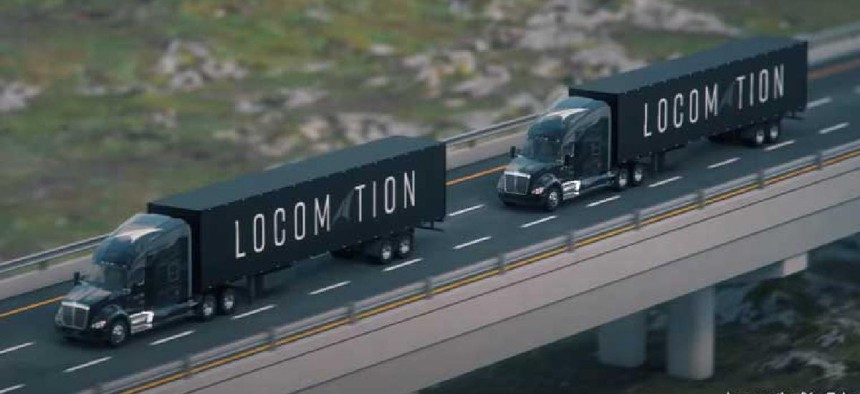The road to autonomous vehicles is littered with policy and tech challenges

The three-state demonstration was designed not just to test the technology, but to identify the administrative and procedural friction points as vehicles navigate the different states’ connected and autonomous vehicle policies.
In late October, an automated truck platoon picked up groceries from the Greater Pittsburgh Community Foodbank and delivered them to foodbanks in Toledo and Detroit.
The demonstration was the work of the Smart Belt Coalition -- a strategic transportation collaboration among five state agencies seven research and academic institutions in Michigan, Ohio and Pennsylvania. SBC partnered with Pittsburgh-based autonomous trucking technology firm Locomation for the test.
Over the course of a week two vehicles took three separate routes from Pittsburgh to Detroit. Both trucks had drivers who maneuvered the vehicles on local roads. When they traveled on divided interstates, however, they were permitted to engage the automated platooning technology.
Locomation’s truck platooning system uses cameras, lidar, radar sensors and automated driving support technology so two or more trucks can travel closely together at highway speeds. The trucks are equipped with antennas to support Dedicated Short Range Communications technology so they can share data about changes to speed, steering and braking in order to stay in sync.
The lead vehicle supplies the acceleration and navigation control, while the following truck carries additional cargo and takes advantage of the decreased wind resistance to save on fuel. In several years, when the technology matures and the second vehicle is fully autonomous while on the highway, its driver can go off duty. With the trucks exchanging the lead position, each driver gets a turn to rest, enabling continuous operation and saving on labor costs.
This demonstration was designed not just to test the technology, but to identify the friction points platooning will face as vehicles navigate the different states’ connected and autonomous vehicle policies. States must not only find a common set of regulations, but they also need data standards and ways to share test and operating data once platooning begins, Mark Kopko, director of the Office of Transformational Technology in Pennsylvania’s Department of Transportation, told the Pittsburgh Post-Gazette.
“If we have 12 states with 12 different rules, how can we make it as seamless as possible for the drivers to move from one state to the next,” Kopko asked. “We think that’s just as important as the technology.
The trip showed the agency coordination and administrative and procedural requirements necessary for a truck platooning system to operate continuously through the three states.
“We thought this is an excellent starting point,” Kopko said. “It’s a good communications starter.”
“Autonomous technology will not move ahead without the full support of government regulators and we are proud to take part in demonstrating our platform and in helping to inform public policy decisions,” Locomation CEO and Co-Founder Çetin Meriçli said. “The SmartBelt Coalition is a prime example of the importance of collaboration across states, agencies and institutions to set the stage for the deployment of real world autonomous trucking.”
The effort will result in a “lessons learned” document on the steps needed to facilitate a truck platooning and automated driving system operation across jurisdictional boundaries.






